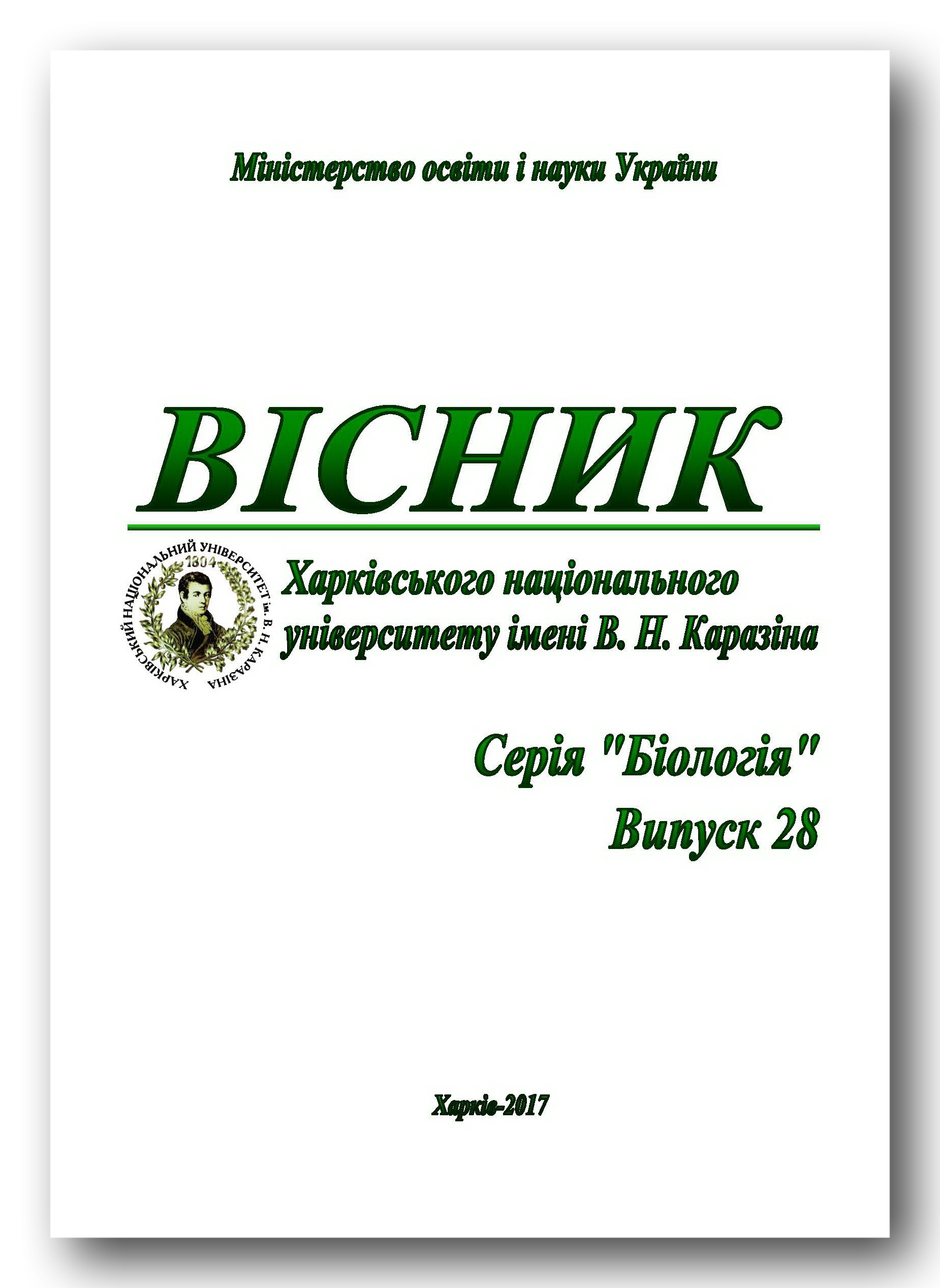Phylogeny of orthologs of β-esterase genes outside of Drosophila genus
Abstract
β-esterase genes of Drosophila have important functions and are present in all members of the genus. The most studied member of these genes is Est-6 gene of D. melanogaster. There are no data yet about presence and numbers of these genes in another insects and their molecular evolution is unknown. With the help of search tool BLAST there have been found orthologous sequences of the Est-6 gene of D. melanogaster in 10 species of insects belonging to 5 orders. It has been shown that the sequences of β-esterases of Drosophila belong to the same cluster with orthologous sequences of Anopheles gambie, Aedes aegypti and Culex quinquefasciatus (order Diptera). Its sister cluster consists of orthologous sequences of other orders of infraclass Neoptera. There have been not detected orthologs of the Est-6 gene in the representatives of the taxon Crustacea (Daphnia pulex), Myriapoda (Strigamia maritima) and Chelicerata (Tetranychus urticae). With the help of the TimeTree instrument there has been substantiated the probable time period of possible origin of genes which are orthologous to β-esterase genes of Drosophila. The hypothesis of the origin of genes which were the ancestral to β-esterases of Drosophila on the early stages of development of the class Insecta is discussed.
Downloads
References
Balakirev E.S., Balakirev E.I., Rodriguez-Trelles F. et al. Molecular evolution of two linked genes, Est-6 and Sod, in Drosophila melanogaster // Genetics. – 1999. – Vol.153. – P. 1357–1369.
Boratyn G.M., Schäffer A.A., Agarwala R. et al. Domain enhanced lookup time accelerated BLAST // Biol. Direct. – 2012. – Vol.7. – P.12.
Brady J.P., Richmond R.C. Molecular analysis of evolutionary changes in the expression of Drosophila esterases (esterase 5/esterase 6/gene regulation) // Proc. Natl. Acad. Sci. USA. – 1990. – Vol.87. – P. 8217–8222.
Claudianos C., Ranson H., Johnson R.M. et al. A deficit of detoxification enzymes: Pesticide sensitivity and environmental response in the honeybee // Insect Mol. Biol. – 2006 – Vol.15. – P. 615–636.
Fitch W. Distinguishing homologous from analogous proteins // Syst. Zool. – 1970. – Vol.19, no 2. – P. 99–113.
Mackert A., do Nascimento A.M., Bitondi M.M. et al. Identification of a juvenile hormone esterase-like gene in the honey bee, Apis mellifera L. – expression analysis and functional assays // Comparative Biochemistry and Physiology – Part B: Biochemistry and Molecular Biology. – 2008. – Vol.150, no 1. – P. 33–44.
Marygold S.J., Leyland P.C., Seal R.L. et al. FlyBase: improvements to the bibliography // Nucleic Acids Res. – 2013. – Vol.41. – P. 751–757.
Pearson W.R., Lipman D.J. Improved tools for biological sequence comparison // Proc. Natl. Acad. Sci. USA. – 1988. – Vol.85, no 8. – P. 2444–2448.
Robin C., Bardsley L.M., Coppin C. et al. Birth and death of genes and functions in the beta-esterase cluster of Drosophila // J. Mol. Evol. – 2009. – Vol.69, no 1. – P. 10–21.
Saitou N., Nei M. The neighbor-joining method: a new method for reconstructing phylogenetic trees // Mol. Biol. Evol. – 1987. – Vol.4, no 4. – P. 406–425.
Tamura K., Peterson D., Peterson N. et al. MEGA5: Molecular evolutionary genetics analysis using maximum likelihood, evolutionary distance, and maximum parsimony methods // Molecular Biology and Evolution. – 2011. – Vol.28. – P. 2731–2739.
Veuille L., Кing L.M. Molecular basis of polymorphism at the esterase-5B locus in Drosophila pseudoobscura // Genetics. – 1995. – Vol.141. – P. 255–262.
Waterhouse R.M., Tegenfeldt F., Li J. et al. OrthoDB: a hierarchical catalog of animal, fungal and bacterial orthologs // Nucleic Acids Res. – 2013. – Vol.41. – P. 358–365.
Zharkikh A., Li W.H. Estimation of confidence in phylogeny: the complete-and-partial bootstrap technique // Mol. Phylogenet. Evol. – 1995. – Vol.4, no 1. – P. 44–63.
http://cegg.unige.ch/orthodb6 – Computational Evolutionary Genomics Group
http://flybase.org – A Database of Drosophila Genes & Genomes
http://tolweb.org/tree – Tree of Life Web Project
http://www.genome.jp/kegg/genes.html – GenomeNet
http://www.uniprot.org/ – Universal Protein Resource
www.timetree.org/ – Time tree of life
Authors retain copyright of their work and grant the journal the right of its first publication under the terms of the Creative Commons Attribution License 4.0 International (CC BY 4.0), that allows others to share the work with an acknowledgement of the work's authorship.




